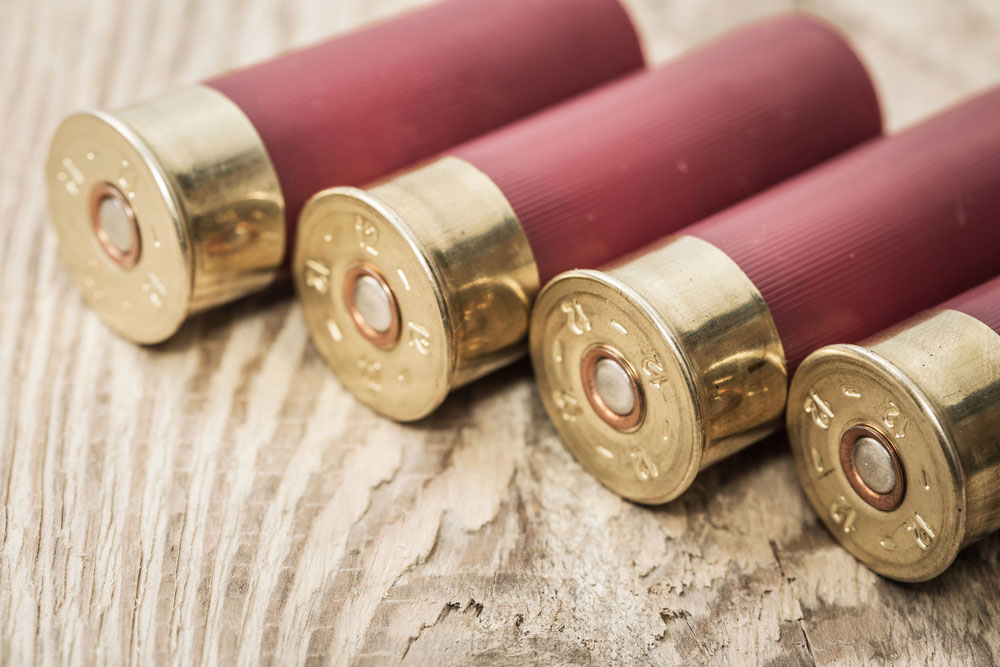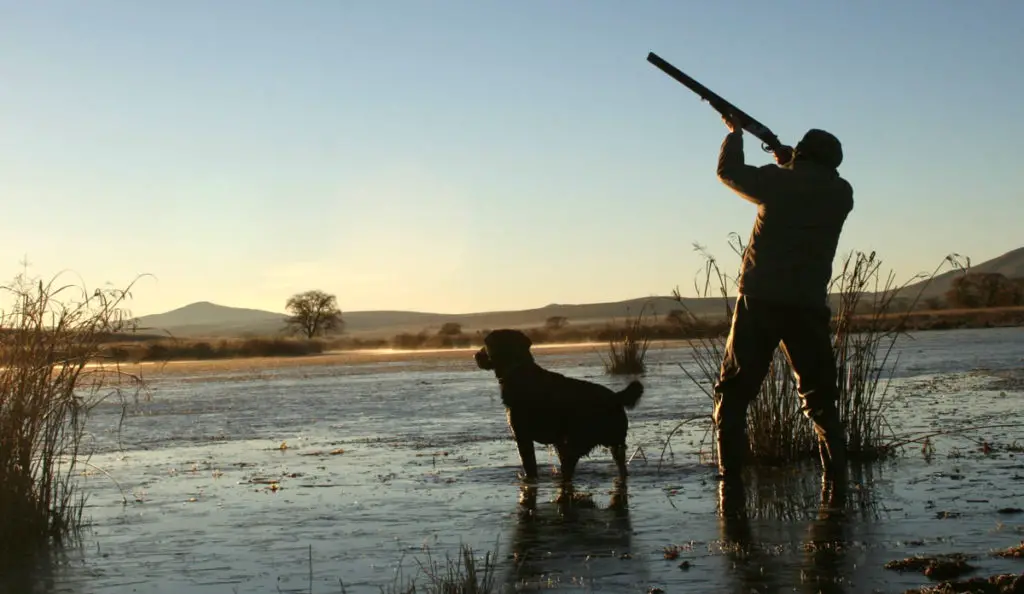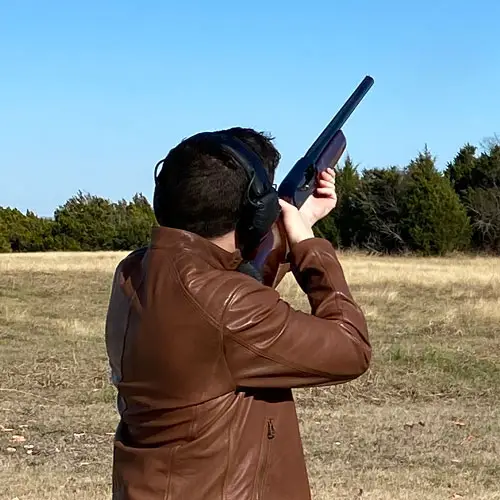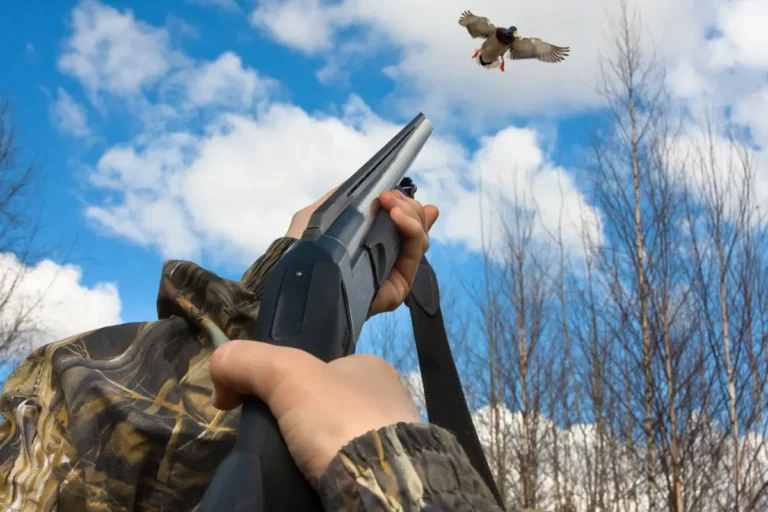Hunters use birdshot for a great many things, ranging from actual hunting to target practice to leisure clay shooting. Birdshot is a type of shotgun ammunition where each individual shell contains a number of tiny pellets depending on the gauge of the gun and the size of the shell. While it’s mostly used for hunting birds and smaller creatures, there’s still a chance that birdshot can injure or kill someone if you’re not careful. Therefore, it’s important to know how far birdshot can go to establish a safe shooting perimeter.
Estimated Travel Distances of Birdshot
- No. 9 birdshot: 700 feet
- No.7.5 birdshot: 750 feet
- No. 6 birdshot: 800 feet
- No. 4 birdshot: 900 feet
- No. 2 birdshot: 1,100 feet
These distances are only estimations and are subject to a number of factors. They’re also the absolute maximum distance that pellets will go under ideal conditions. For instance, many experienced shotgun users consider the flying distance of No. 8 shotgun shells to be around 600 feet rather than between 750 and 700 feet. However, if you want to be on the safe side, then you should adhere to the list above, which is recommended by the Hunter-Ed Safety Guide.

Effective Range of Birdshot
Birdshot is considered effective up to a distance of 35 to 50 yards.
Just as there are a number of factors that determine how far a birdshot will go, there are also factors determining how far it will go accurately. The size of the individual pellets, the gauge of the gun, and weather conditions will all impact the accuracy of your birdshot.
Factors that Affect Birdshot Distance
While birdshot is only accurate up to a certain point, it’s possible for the pellets to travel much farther. They will just have reduced velocity, which means they won’t be as damaging when they impact. Here are the factors that determine how far birdshot can travel.
Size of the Pellets
The size of the pellets contained inside your shotshell will have the biggest impact on the distance they can go. It’s simple physics that the heavier an object is, the further it will go when it’s propelled with enough momentum. While shells containing smaller pellets will have a higher concentration of them, the individual pellets won’t go as far.
Gauge of the Gun
Just as the size of the pellet plays a significant role, the size of the gun plays an equal one. For example, a 12-gauge shotgun uses more force and pressure to fire a shot than a 20-gauge or smaller shotgun. Therefore, the higher the gauge of the gun and the more powerful it is, the further it will propel the contents of a shotshell.
Weather Conditions
One of the biggest things that determines how far a shotgun pellet can go is the air and weather conditions where you’re shooting. As a general rule, bullets will travel further in thinner air at higher altitudes. So, if you’re shooting your shotgun in the mountains of Colorado, your pellets will go further than if you’re shooting at sea level. You should add an extra 200 feet to the calculations above depicting the distance of different pellets based on their shot size.
Air density and temperature play the biggest factors, but humidity does as well. Pellets will travel further under humid conditions. This is because humidity makes the air thinner, extending the range of your shot.
By taking the weather conditions, power of the shotgun, and weight of the pellets into consideration, you can get a pretty good estimate of how far your pellets will go through the air.

Is Birdshot Dangerous at Long Distances?
Any projectile can be dangerous, but it is likely not going to be serious at very long distances.
Birdshot loses its potency the further it goes. This is why you typically only see hunters using this type of ammo on birds that are within 40 or so yards of them. While birdshot may be able to travel up to 1,000 feet or even 1,500 feet under ideal conditions, it won’t be overly dangerous. Chances are, in fact, that getting hit by a pellet at that distance will feel more like an airsoft or BB gun than a shotgun. When hunting, its called “getting peppered.” However, it can still be dangerous. It can hurt you if a stray pellet happens to hit your eye. Never purposefully fire bird shot at anybody no matter how far away they are.
Wrap Up
While there’s plenty of factoring and information to consider when estimating how far birdshot can go, this article will give you a pretty good idea. Using the list above as well as the factors to consider, you will be able to establish a safe shooting perimeter for hunting or sport shooting.

Joseph has been hunting for most of his life. Some of his best memories were growing up sitting in a treestand or a blind and waiting for a monster buck to come along. His main focus has been deer hunting, typically with my trusty 20 gauge shotgun.


You have the humidity effect backwards. Humid air is actually less dense than dry air, even though that’s not the way it feels on a hot day. So the shot will travel further because of less resistance.
Good catch – that was our mistake. I’ve fixed it in the article.